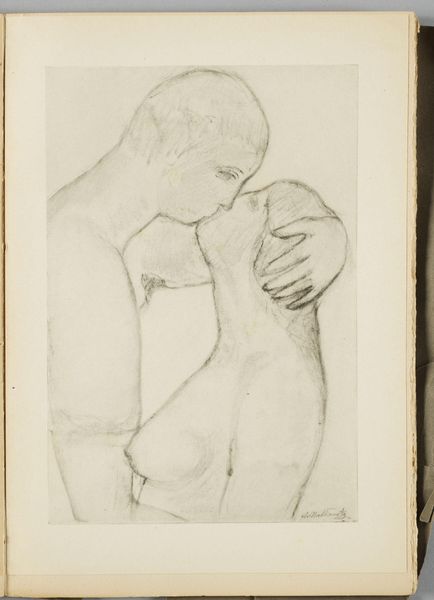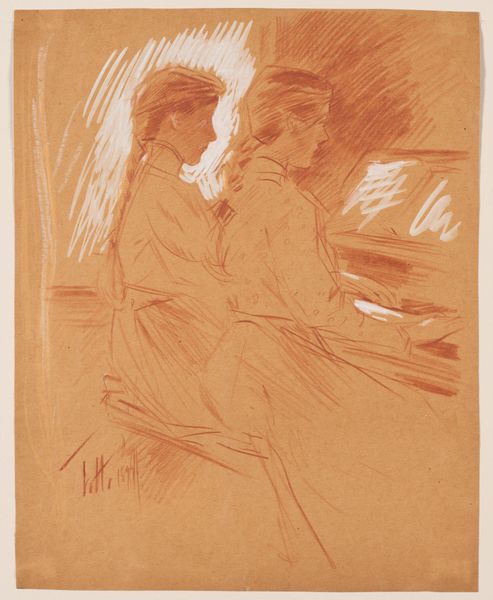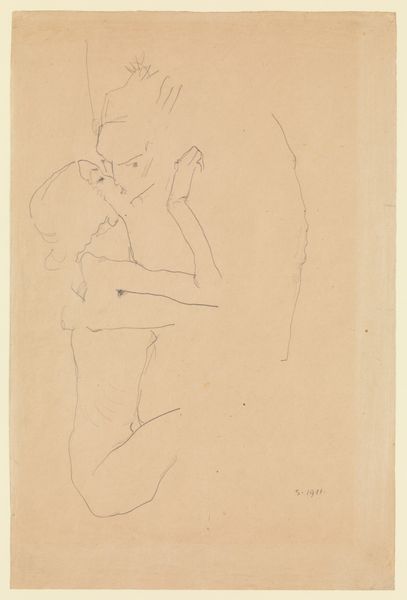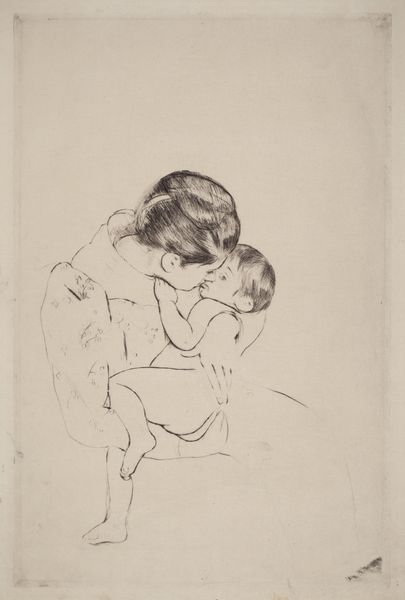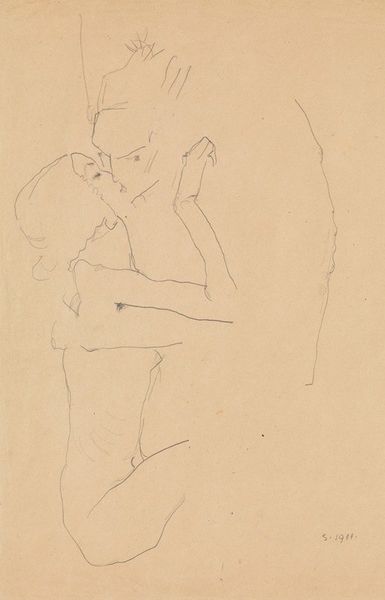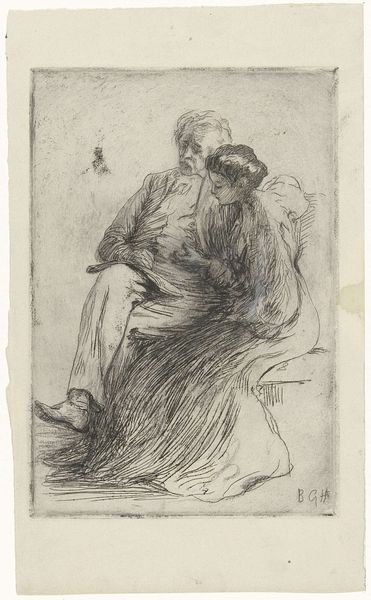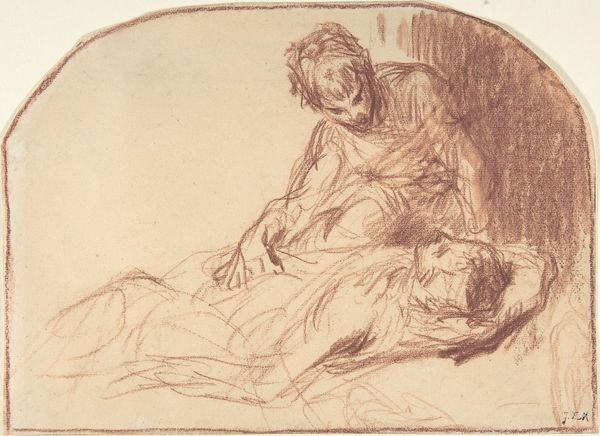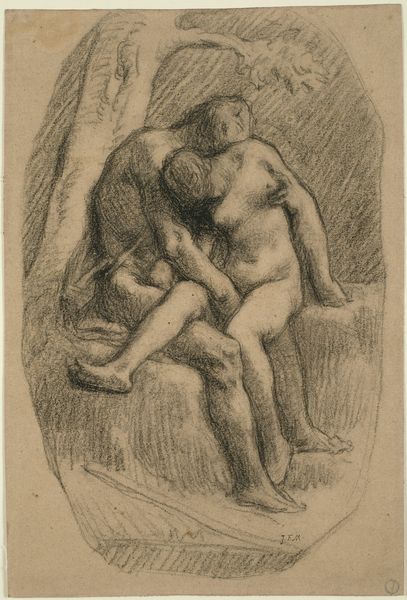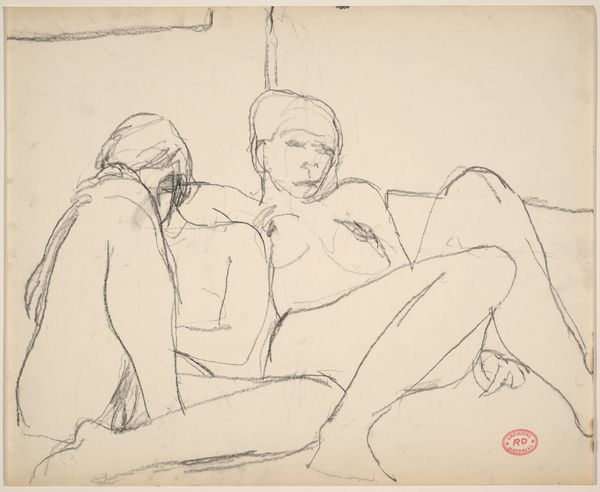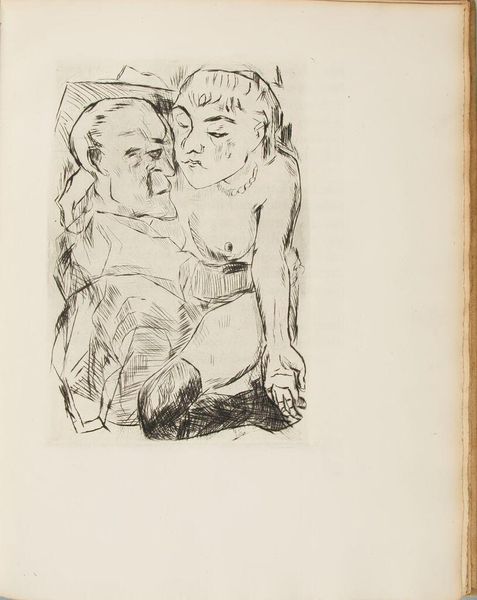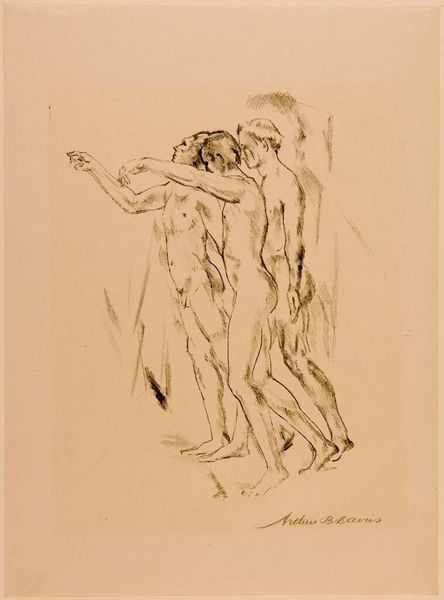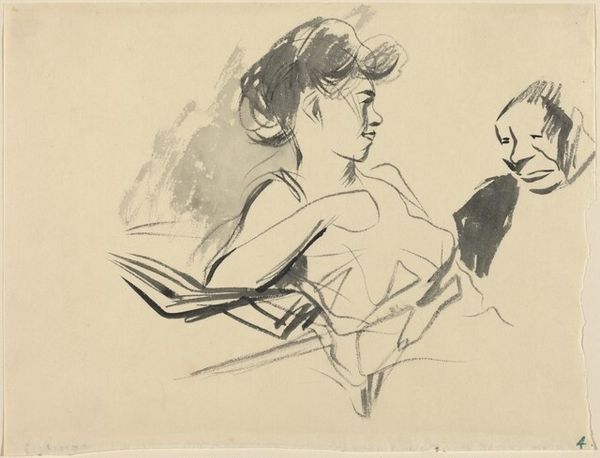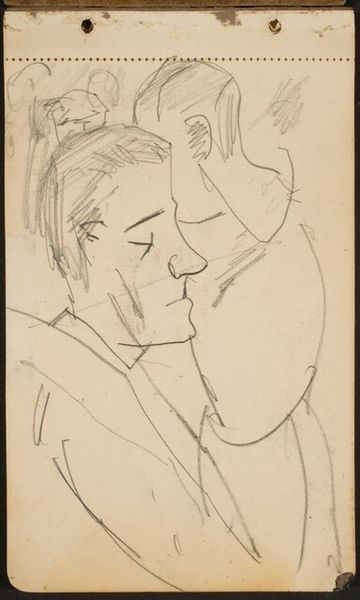
drawing, print, graphite
#
portrait
#
pencil drawn
#
drawing
# print
#
pencil sketch
#
figuration
#
pencil drawing
#
expressionism
#
graphite
#
portrait drawing
#
monochrome
Dimensions: plate: 17.8 x 24 cm (7 x 9 7/16 in.) sheet: 29.6 x 41 cm (11 5/8 x 16 1/8 in.)
Copyright: National Gallery of Art: CC0 1.0
Editor: Today, we're looking at Edvard Munch’s 1913 print, "Man and Woman," rendered in graphite. The work is so raw and sketchy. They appear troubled, perhaps locked in some silent struggle. What do you make of this? Curator: Ah, Munch. He captures something primal, doesn't he? To me, it feels like an etching of a feeling, not just a depiction of figures. Notice how their forms almost blend, yet there’s such a distance in their gazes. I wonder if he's suggesting a merging of identities within the struggle of a relationship. Is it tenderness, or are they trapped? What does that line between them suggest to you? Editor: It feels like a barrier, a definite separation, despite the closeness. Maybe emotional, more than physical? Curator: Precisely! And that’s pure Munch. He’s digging beneath the surface, scratching away at the polite veneer of human connection. The visible, hurried lines – almost violent, wouldn't you say? - are the exposed nerves of their relationship. There is also an anxiety in their faces. Does it also strike you that they almost seem to mirror each other but also oppose in equal measure? Editor: I hadn’t considered the mirrored opposition. Now I see the parallel anxieties and how powerful and effective that is. It certainly throws the reading of a work into sharp relief! Curator: Indeed. Munch had this unnerving ability to tap into those unspoken tensions. And he generously shares that with us. It feels deeply confessional, and not particularly hopeful, I suspect. Editor: It’s definitely left me with much to think about, regarding connection and… disconnection. Thanks so much!
Comments
No comments
Be the first to comment and join the conversation on the ultimate creative platform.

